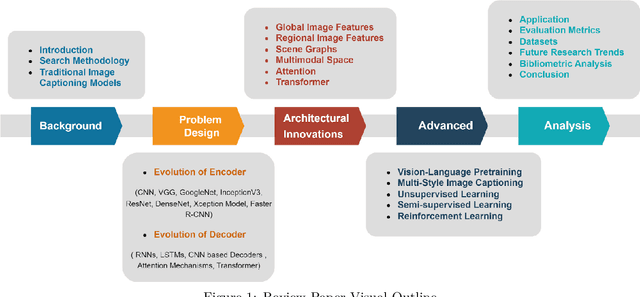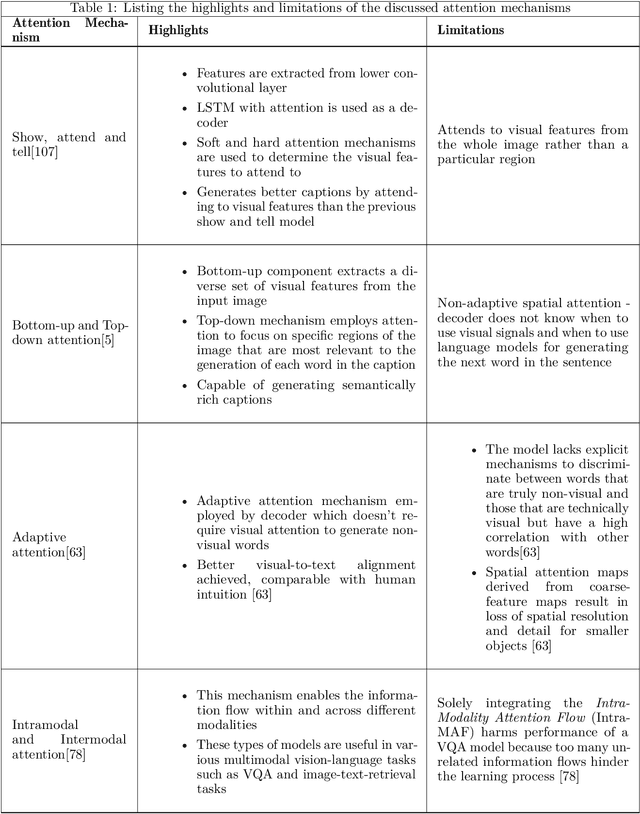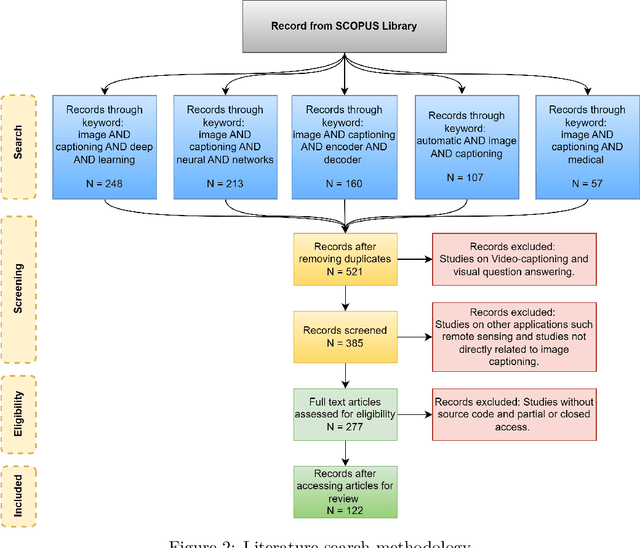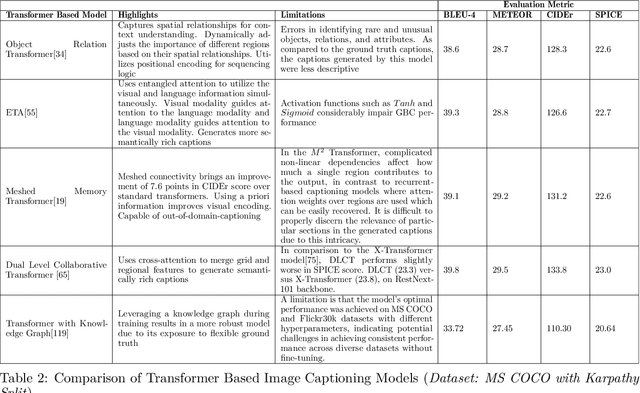Millie Pant
Pixels to Prose: Understanding the art of Image Captioning
Aug 28, 2024



Abstract:In the era of evolving artificial intelligence, machines are increasingly emulating human-like capabilities, including visual perception and linguistic expression. Image captioning stands at the intersection of these domains, enabling machines to interpret visual content and generate descriptive text. This paper provides a thorough review of image captioning techniques, catering to individuals entering the field of machine learning who seek a comprehensive understanding of available options, from foundational methods to state-of-the-art approaches. Beginning with an exploration of primitive architectures, the review traces the evolution of image captioning models to the latest cutting-edge solutions. By dissecting the components of these architectures, readers gain insights into the underlying mechanisms and can select suitable approaches tailored to specific problem requirements without duplicating efforts. The paper also delves into the application of image captioning in the medical domain, illuminating its significance in various real-world scenarios. Furthermore, the review offers guidance on evaluating the performance of image captioning systems, highlighting key metrics for assessment. By synthesizing theoretical concepts with practical application, this paper equips readers with the knowledge needed to navigate the complex landscape of image captioning and harness its potential for diverse applications in machine learning and beyond.
Improved Local Search in Artificial Bee Colony using Golden Section Search
Oct 23, 2012



Abstract:Artificial bee colony (ABC), an optimization algorithm is a recent addition to the family of population based search algorithm. ABC has taken its inspiration from the collective intelligent foraging behavior of honey bees. In this study we have incorporated golden section search mechanism in the structure of basic ABC to improve the global convergence and prevent to stick on a local solution. The proposed variant is termed as ILS-ABC. Comparative numerical results with the state-of-art algorithms show the performance of the proposal when applied to the set of unconstrained engineering design problems. The simulated results show that the proposed variant can be successfully applied to solve real life problems.
 Add to Chrome
Add to Chrome Add to Firefox
Add to Firefox Add to Edge
Add to Edge